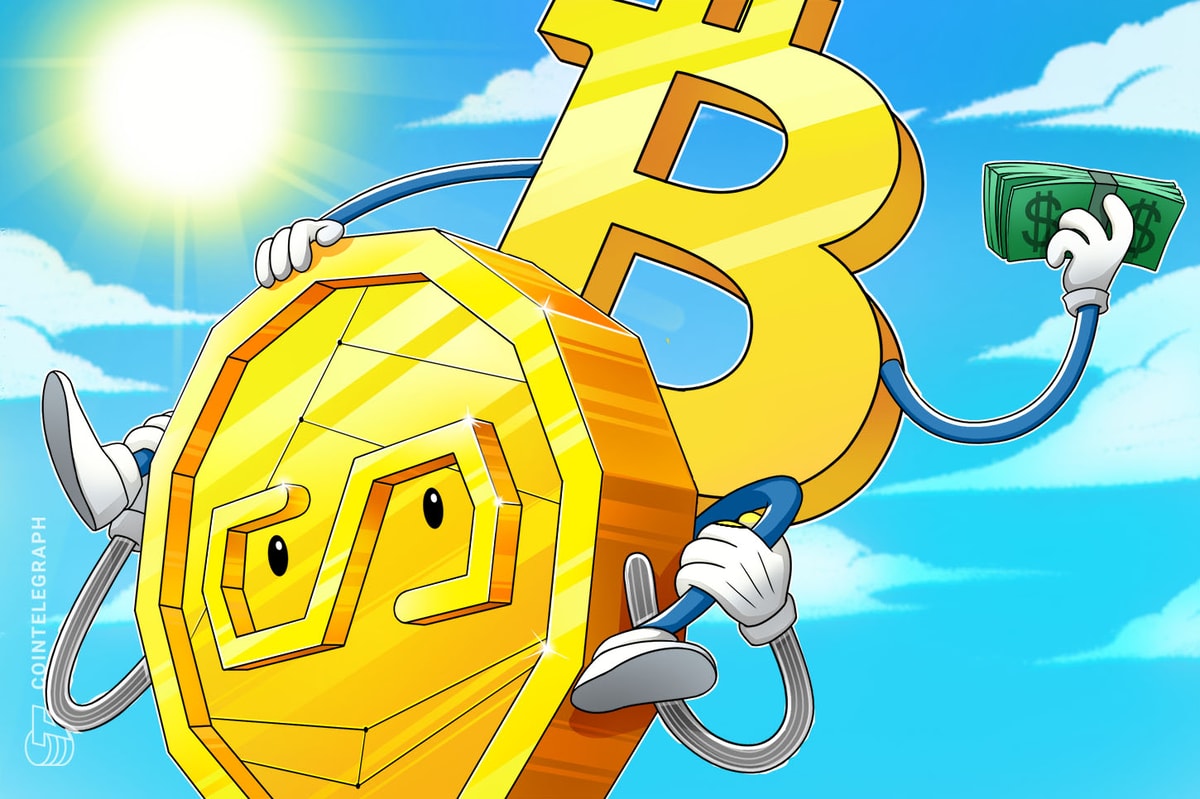The cryptocurrency market recently experienced events that were previously expected to present a severe negative price impact, and yet, Bitcoin (BTC) traded near $37,000 on Nov. 22 — essentially flat from three days prior.
Such performance was utterly unexpected given the relevance of Binance’s plea deal on Nov. 21 with the United States government for violating laws involving money laundering and terror financing.
Bearish news has had limited impact on Bitcoin price
One might argue that entities have been manipulating Bitcoin’s price to avoid contagion, possibly involving the issuing of unbacked stablecoins — especially those with direct ties to the exchanges suffering from regulatory pressure. Thus, to identify whether investors became highly risk-averse, one should analyze Bitcoin derivatives instead of focusing solely on the current price levels.
The U.S. government filed indictments against Binance and co-founder Changpeng “CZ” Zhao in Washington state on Nov. 14, but the documents were unsealed on Nov. 21. After admitting the offenses, CZ stepped away from Binance management as part of the deal. Penalties totaled over $4 billion, including fines imposed on CZ personally. The news triggered a mere $50 million in BTC leveraged long futures contracts after Bitcoin’s price momentarily traded down to $35,600.
It is worth noting that on Nov. 20, the United States Securities and Exchange Commission sued crypto exchange Kraken, alleging it commingled customer funds and failed to register with the regulator as a securities broker, dealer and clearing agency. Additionally, the complaint claimed Kraken paid for operational expenses directly from accounts containing customer assets. However, Kraken said the SEC’s commingling accusations were previously earned fees, so essentially their proprietary assets.
Another potentially disastrous tidbit of news came from Mt. Gox, a now-defunct Bitcoin exchange that lost 850,000 BTC to a hack in 2014. Nobuaki Kobayashi, the Mt. Gox trustee, announced on Nov. 21 the redemption of $47 million in trust assets and reportedly plans to start the first cash repayments to creditors in 2023. Even though there was no information regarding the sale of Bitcoin assets, investors speculated that this final milestone is closer than ever.
Several experienced traders and analysts had posted on social media that they anticipated a crypto market crash if Binance were indicted by the DOJ. Some examples are show below, and it is safe to say such a theory was almost a consensus among investors.
ETF denied, slow bleed is most likely, with a switch to hard crash if DOJ charges are unsealed soon against Binance.
— Parrot Capital (@ParrotCapital) August 26, 2023
I do not believe in coincidences. The Universe is rarely so lazy.
Expecting ETFs to be rejected and DoJ to drop the hammer on Binance crushing bulls dreams for 2023.
— McKenna (@Crypto_McKenna) July 31, 2023
Notice how McKenna predicted that Binance would be indicted by the DOJ and further added that the ongoing Bitcoin spot exchange-traded (ETF) fund applications would be denied by the SEC. But as counterintuitive as it might sound, Binance going fully compliant increases the odds of a spot ETF approval. This is because it greatly weakens the SEC’s main argument for previous denials, namely the excessive volume market share on unregulated exchanges.
Nothing concrete came out from the spot Bitcoin ETF in regard to recent regulatory actions, but the amends to multiple proposals are a hint of a healthy discussion with the SEC.
Bitcoin derivatives display resilience
To confirm if the Bitcoin price resilience aligns with professional investors’ risk assessment, one should analyze BTC futures and options metrics. For instance, traders could have rushed to hedge their positions, which doesn’t pressure the spot markets but vastly impacts BTC futures premium and options pricing.

The price of Bitcoin monthly futures contracts tends to differ from regular spot exchanges since participants demand more money to delay the settlement. That’s not exclusive to cryptocurrencies, and in a neutral market, it should stand near an annualized 5% rate.
Notice how Bitcoin futures currently hold an 8% premium, which indicates excessive demand for leverage longs, but far from excessive. This level is lower than the 11.5% seen in mid-November but is quite positive given the recent regulatory news flow.
Related: BlackRock met with SEC officials to discuss spot Bitcoin ETF
To confirm if Bitcoin derivatives did not experience a huge inflow of hedge operations, one needs to analyze BTC option markets as well. The 25% delta skew is a telling sign when arbitrage desks and market makers overcharge for upside or downside protection.
When traders anticipate a drop in Bitcoin’s price, the delta 25% skew tends to rise above 7%, while periods of excitement typically see it dip below negative 7%.

As displayed above, the options 25% delta skew indicates optimism for the past four weeks, as the put (sell) options have been trading at a discount when compared with similar call (buy) options. More importantly, the recent news flow did not change professional traders’ appetite for hedging strategies.
Overall, there’s no doubt that the impact of regulatory actions and the potential sell pressure from Mt. Gox caught the market in a great mood, given the derivatives indicators.
Additionally, the liquidation of $70 million leveraged BTC longs reduced the pressure from future negative price oscillations, meaning even if the price revisits $35,000, there’s no indication of excessive optimism.
Since the final round of ETF decisions is scheduled for January and February, there’s little incentive for Bitcoin bears to pressure the market while negative news has had zero impact. Ultimately, the path to $40,000 becomes more certain.
This article does not contain investment advice or recommendations. Every investment and trading move involves risk, and readers should conduct their own research when making a decision.
Read More: cointelegraph.com









 Bitcoin
Bitcoin  Ethereum
Ethereum  Tether
Tether  XRP
XRP  Solana
Solana  USDC
USDC  Dogecoin
Dogecoin  TRON
TRON  Cardano
Cardano  Lido Staked Ether
Lido Staked Ether  Wrapped Bitcoin
Wrapped Bitcoin  Hyperliquid
Hyperliquid  Sui
Sui  Wrapped stETH
Wrapped stETH  Chainlink
Chainlink  Avalanche
Avalanche  LEO Token
LEO Token  Stellar
Stellar  Bitcoin Cash
Bitcoin Cash  Toncoin
Toncoin  Shiba Inu
Shiba Inu  Hedera
Hedera  USDS
USDS  Litecoin
Litecoin  WETH
WETH  Wrapped eETH
Wrapped eETH  Polkadot
Polkadot  Monero
Monero  Binance Bridged USDT (BNB Smart Chain)
Binance Bridged USDT (BNB Smart Chain)  Ethena USDe
Ethena USDe  Bitget Token
Bitget Token  Pepe
Pepe  Pi Network
Pi Network  Coinbase Wrapped BTC
Coinbase Wrapped BTC  WhiteBIT Coin
WhiteBIT Coin  Aave
Aave  Uniswap
Uniswap  Dai
Dai  Ethena Staked USDe
Ethena Staked USDe  Bittensor
Bittensor  OKB
OKB  Aptos
Aptos  NEAR Protocol
NEAR Protocol  BlackRock USD Institutional Digital Liquidity Fund
BlackRock USD Institutional Digital Liquidity Fund  Cronos
Cronos  Internet Computer
Internet Computer  Jito Staked SOL
Jito Staked SOL  Ondo
Ondo  Ethereum Classic
Ethereum Classic